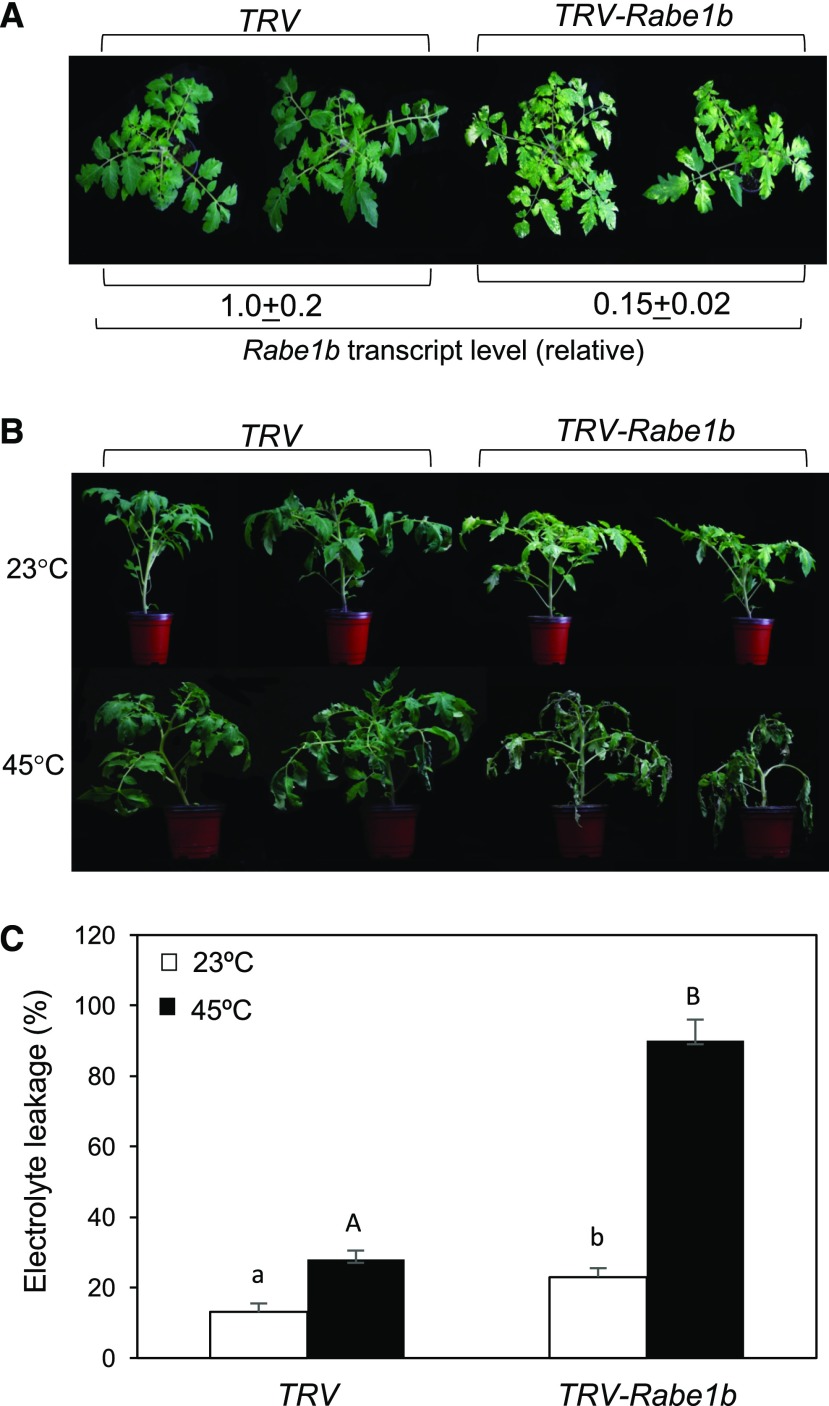Figure 10.
Functional analysis of tomato Rabe1b in tomato heat tolerance using TRV-mediated gene silencing. A, Tomato plants infiltrated with A. tumefaciens cells harboring the empty pTRV vector or the silencing pTRV-Rabe1b vector were placed in a 23°C growth room. Photographs of the representative plants were taken 4 weeks after A. tumefaciens infiltration. Tomato Rabe1b transcript levels in tomato plants infiltrated with A. tumefaciens cells harboring the empty pTRV vector or the pTRV-Rabe1b silencing vector were determined by RT-qPCR analysis using total RNA isolated from the terminal leaflets of the fifth leaves of A. tumefaciens-infiltrated tomato plants and are listed below the images. Means and se were calculated from approximately 10 leaflets from five plants. B, A. tumefaciens-infiltrated tomato plants were placed in a 23°C or 45°C growth chamber for 8 h. Photographs of the whole plants were taken after the 5-d recovery. C, Electrolyte leakage (EL) of the terminal leaflets of the fifth leaves was determined immediately after 8 h at 23°C or 45°C heat treatment. Means and se were calculated from average EL values determined from three experiments with10 leaves per experiment for each genotype. According to Duncan’s multiple range test (P < 0.01), means of EL at 23°C do not differ significantly if they are indicated with the same lowercase letter; means of EL at 45°C do not differ significantly if they are indicated with the same uppercase letter.

